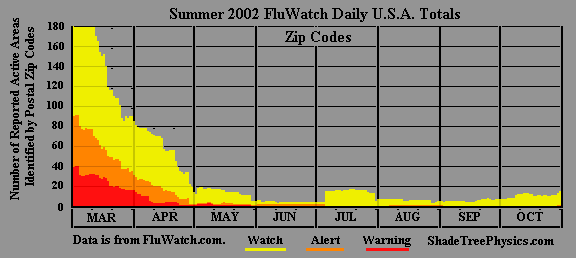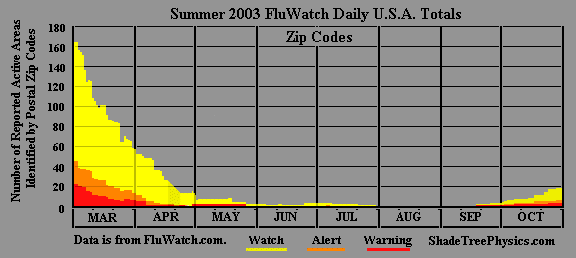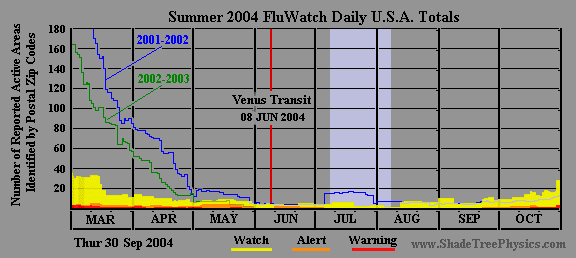


There was no apparent out of the ordinary FluWatch activity following the Venus transit. There was a mid-month surge in May 2004, but in the absense of further evidence it would be hard to relate it to the transit.
In July 2004, an outbreak of influenza A (H3N2) was detected at 3 Bhutanese refugee camps in southeastern Nepal. Hemagglutination inhibition showed that ≈ 40% of the viruses from this outbreak were antigenically distinct from the A/Wyoming/3/03 vaccine strain. See: Influenza A (H3N2) Outbreak, Nepal. This outbreak would not have shown up in the USA Fluwatch activity. [Added 12 Oct 2014.]
[08 Jul 2004]
In the last two weeks, avian influenza appears to have re-emerged in poultry in
several countries in Asia. These outbreaks could either be new outbreaks of Highly Pathogenic Avian Influenza A(H5N1) virus or a continuation of the outbreaks first
reported earlier in the year. These events, in addition to two new research reports
-- about the virus becoming increasingly pathogenic and becoming more widespread
in birds in the region -- fuel the World Health Organization's concern about the
threat the virus poses to human health. See: WHO Global Alert and Response (GAR) Avian influenza - Current evaluation
of risks to humans from H5N1 following recent reports. [Added 12 Oct 2014.]
Robert Fritzius
fritzius@bellsouth.net
Home |
Up one level |
Previous |
Next
Top